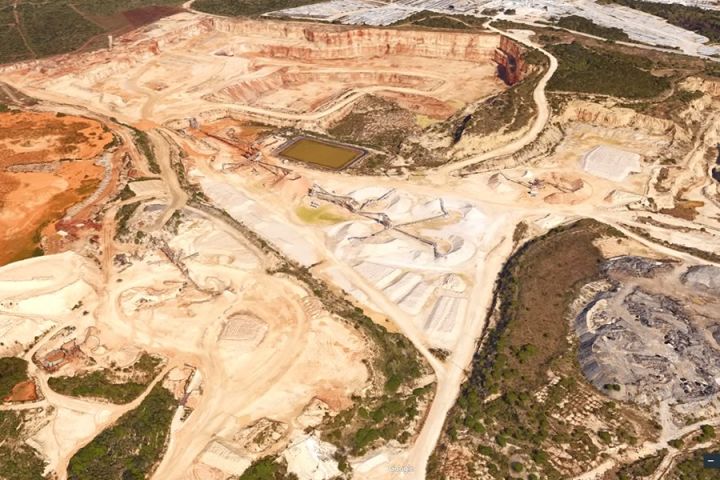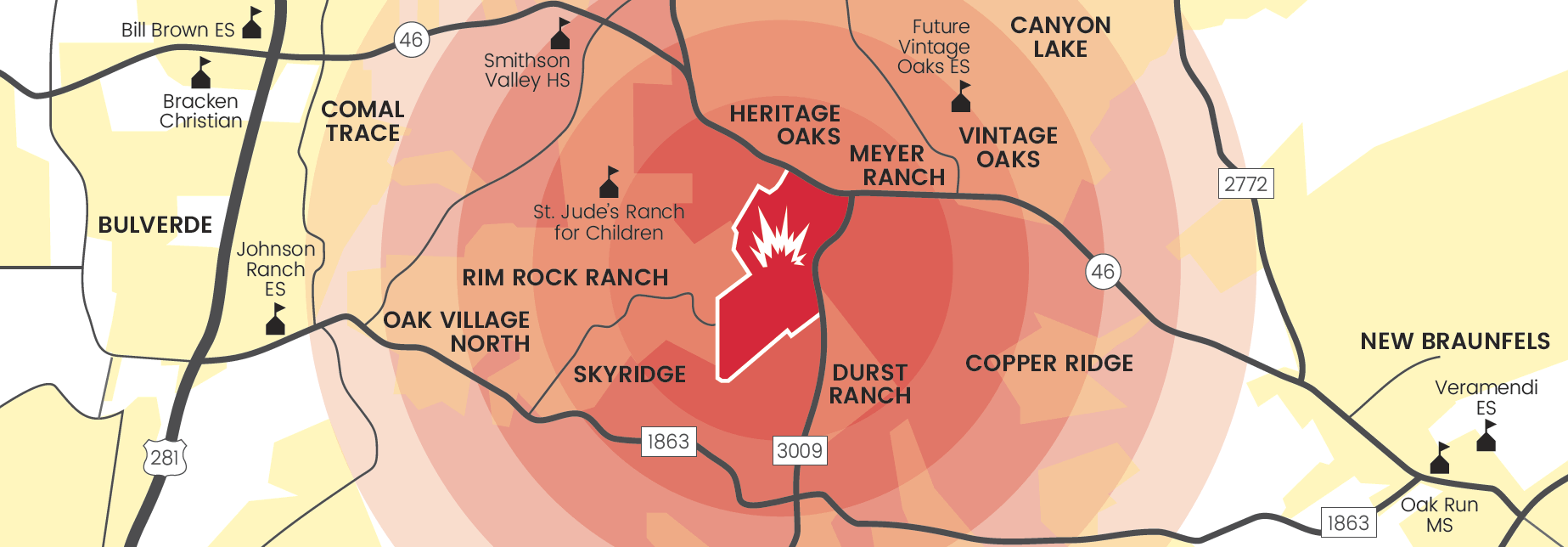 Aerial view of the Vulcan Materials quarry north of loop 1604 in San Antonio.
Aerial view of the Vulcan Materials quarry north of loop 1604 in San Antonio.
Residents of Comal County and other surrounding areas are fighting for their health and the environment as the contested case hearing for 3009 Vulcan Quarry is underway. The hearing is to determine whether the Texas Commission on Environmental Quality (TCEQ) should grant, deny, or alter Vulcan Materials Company’s air quality permit application. Vulcan, the Alabama-based aggregate mining and production company, is hoping to inflate their portfolio of quarries in Texas by 1,500 acres of pristine Hill Country in order to mine, quarry, and crush limestone. The proposed site is situated between Bulverde and New Braunfels on FM 3009. While on the surface, one permit application for a company whose primary business lies in hauling rocks might not appear to be an environmental issue, it highlights the larger trend of this invasive, parasitic industry.

Running through Texas is the I-35 corridor and many industries capitalize on locating their endeavors near this interstate for quick, reliable transportation. However, also located along this congested interstate is the Balcones fault line, a major limestone deposit. This stone has been used in Texas for decades, and can even be found in the Texas State Capitol. Today, there are currently 29 quarries and plants in the area surrounding San Antonio alone, comprising 25,000 acres of previously undeveloped hill country. An increasing population and growing demand for building materials may lead us to believe that this industry would be good for the local economies, but according to Vulcan each plant at full production only creates 15-20 full-time positions, and they’ve proven themselves to be bad neighbors.
Vulcan Materials owns and runs another plant in San Antonio that alone had over 35 violations and 80 formal complaints according to TCEQ. A good neighbor would clean up after themselves, but their violations have included exceeding air pollution limits and failing to adequately prevent pollution by refusing to spray down dust and hazardous particulate matter. While on the surface, dust may appear to be more of a nuisance than a hazard, it comes with several implications for human health. Quarries create carcinogenic dust and particulate matter that puts the 12,000 residents that live near this proposed site at risk for many severe health effects. These include silicosis, heart disease, cognitive disorders, fertility issues, and even leukemia. Vulnerable populations, including those already living with respiratory illnesses, children, and people with compromised immune systems, could face more severe impacts. With the current pediatric asthma rate of the San Antonio and New Braunfels area at nearly twice the national average, kids in this area would have an even more difficult time playing outside.
To make matters worse there are no air quality monitors in Comal County. In fact, the closest station is located 17 miles upwind, which could make it nearly impossible to hold Vulcan accountable if they exceed air contamination limits and make their neighbors sick. A good neighbor would, at the very least, release their data on the pollution they produce, but according to attorneys for Friends of Dry Comal Creek, Vulcan has not been transparent about their intended pollution and has refused to provide requested materials over their silica production, claiming they are privileged trade secret materials. They don’t seem to think their pollution or the health of their 12,000 neighbors is relevant.
Vulcan claims that they strive to be stewards of the environment, but this proposed site threatens the water supply of nearly 1.7 million people, the habitat of several endangered species, and the largest colony of bats in the world. The 3009 Vulcan Quarry site is located in the Edwards Aquifer Recharge Zone. This stretch of land that feeds the Edwards Aquifer is one of the most fragile environmental areas in Texas. Due to the unique karst geological makeup of the aquifer, chemical spills, contaminants, and other potential pollutants that enter the recharge zone can travel very quickly through the porous rock. Contamination can pollute sources of drinking water, private wells, and agricultural irrigation in a matter of hours.
In addition to the greater risk of pollution, Vulcan would consume a lot of water. Their other San Antonio location required a well with an output capable of 150 gallons of water per minute. As written, their current permit contains no water-related restrictions or protections, and the potential for high rates of consumption could be devastating during the arid summer months of Texas. This could increase the scarcity of a vital resource for the life that calls the Hill Country home.
Some of the native wildlife that inhabit the Hill Country threatened by aggregate mining include seven endangered species and the largest colony of any species of bat in the world. These populations could face significant disruption from activities even after all stone has been extracted. These threats include the destruction of their habitats, contamination of water supply, and from noise and light pollution coming from the quarry. Even when all the usable stone has been removed, and the company leaves town, they make sure to leave their calling card; a lake too acidic and hazardous for life to return.
Several bills were filed this legislative session that would have implemented more safety and environmental protections. HB 2710, authored by Rep. Andrew Murr, would have required companies to include a land reclamation plan in their application, while similar bills authored by Rep. Erin Zweiner and Sen. Donna Cambell would have restricted the location and operating times. Unfortunately, any bill that would have prevented the Vulcan 3009 Quarry, or at least reduced its human health and environmental risks, had a slim chance of passing this session. Only two bills specifically addressing aggregate mining made it out of their respective committees, but some progress was still made. Sen. Cambell was able to increase the buffer zone from 440 yards to 880 yards from residential areas, schools, or hospitals, by attaching an amendment to HB 2726 which passed in both the house and senate.
In an effort to further protect this important habitat, conservation groups, led by The Nature Conservancy, and a local developer have purchased thousands of acres in the region since 1992 to try to conserve the land and its resources. The Vulcan 3009 Quarry would upend this progress in one move, upsetting the unique ecology of the hill country and putting thousands of Texans at risk.
To learn more about the Vulcan 3009 Quarry and what you can do to stop it, visit https://www.stop3009vulcanquarry.com.